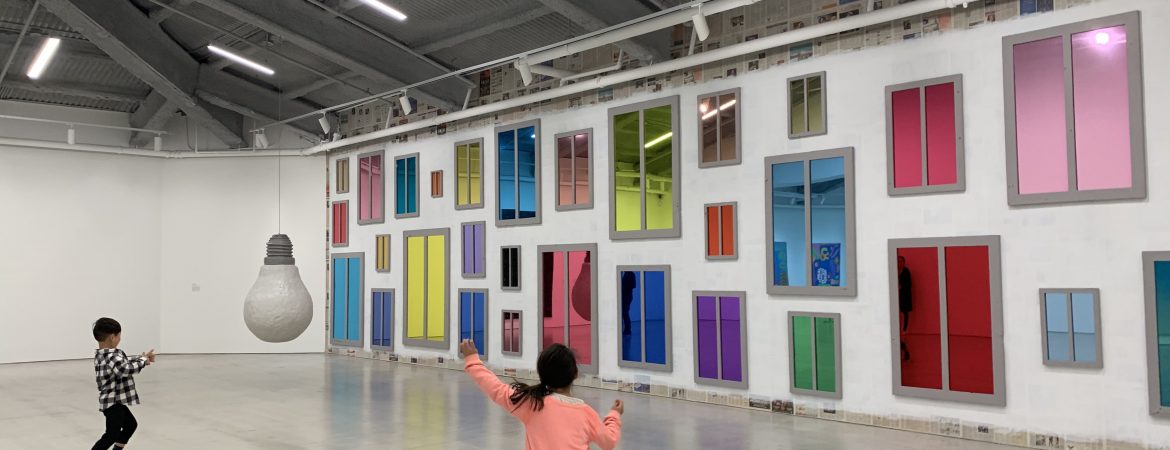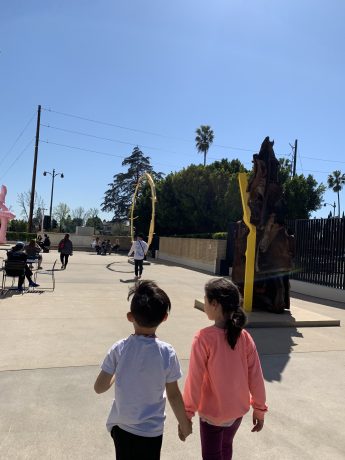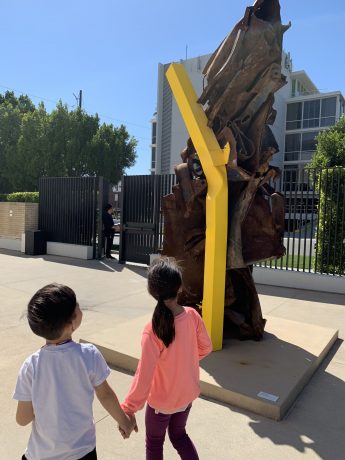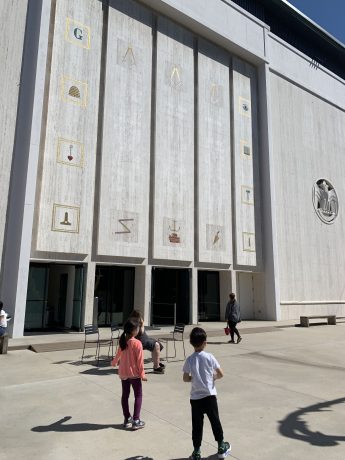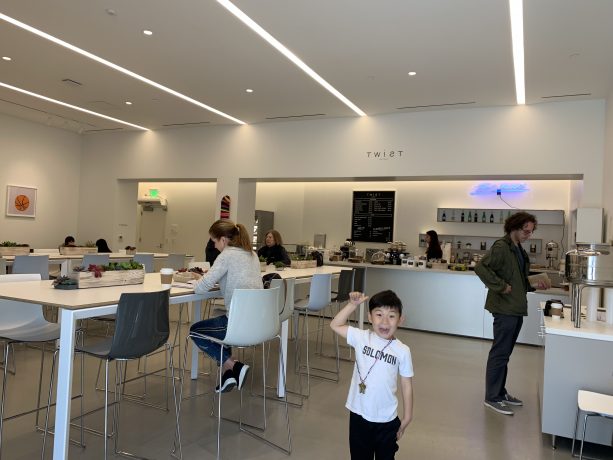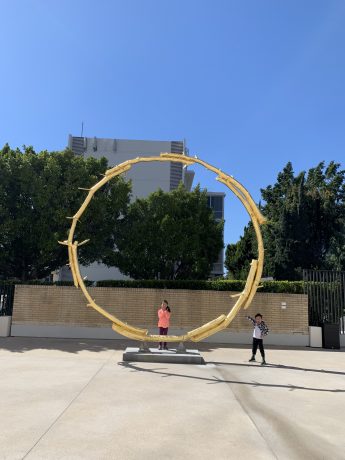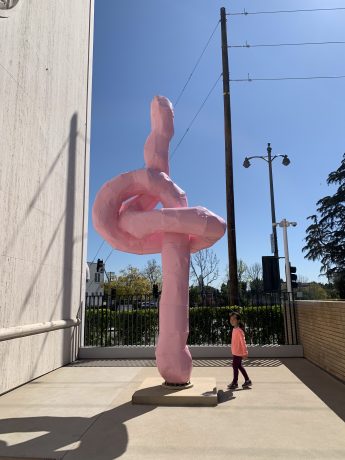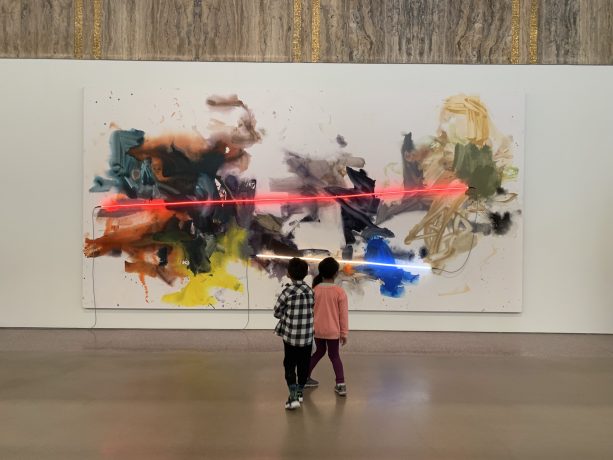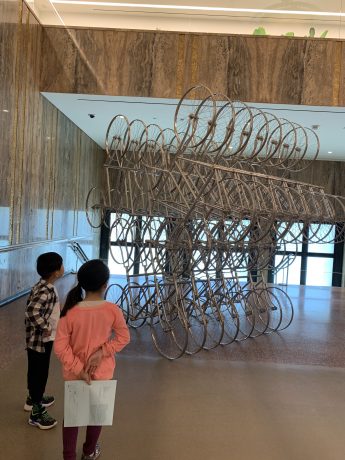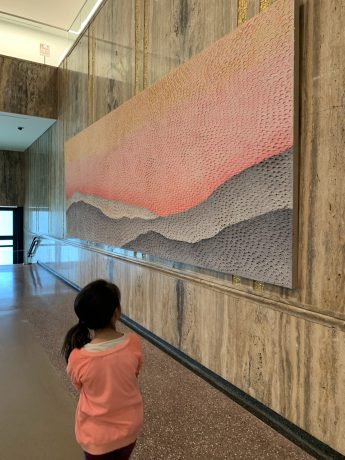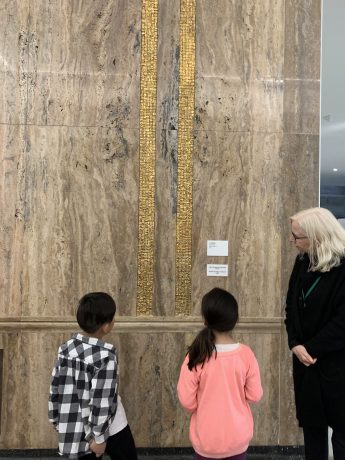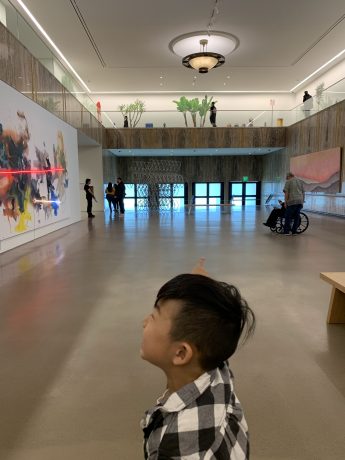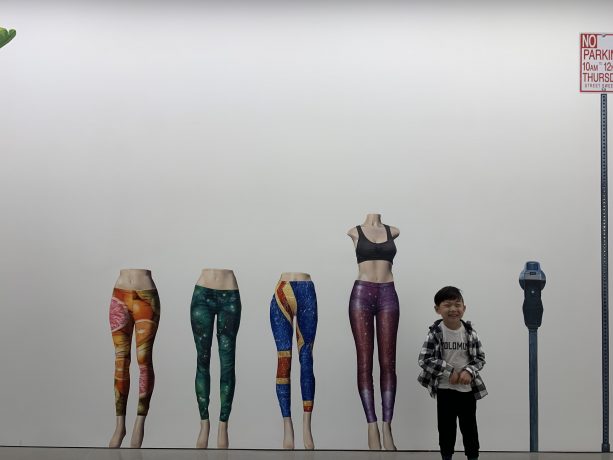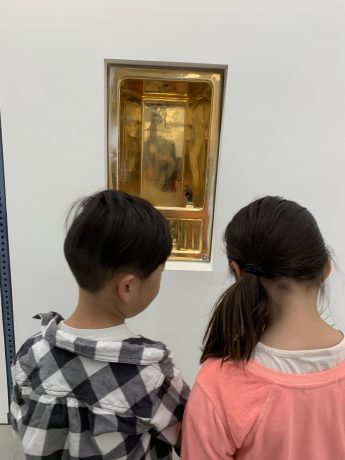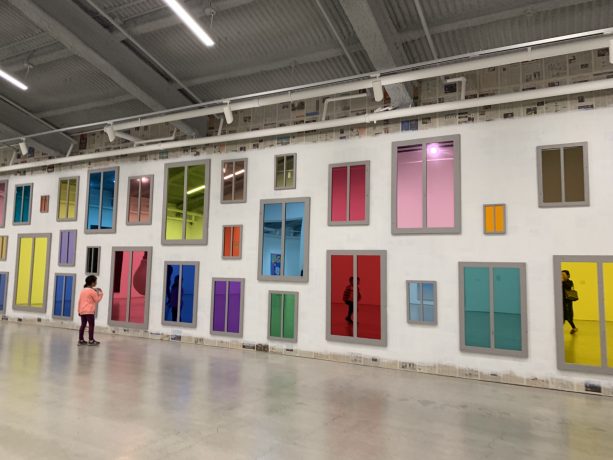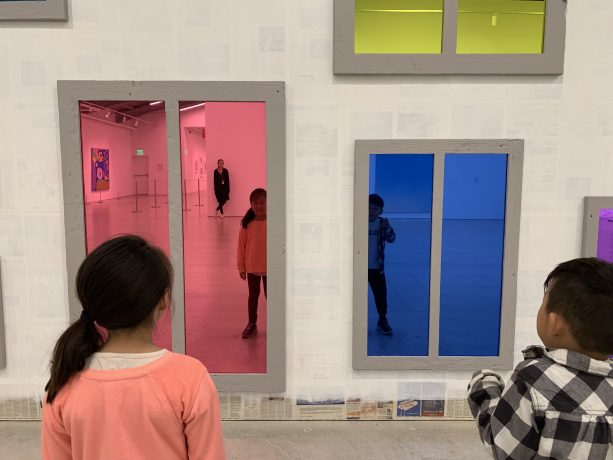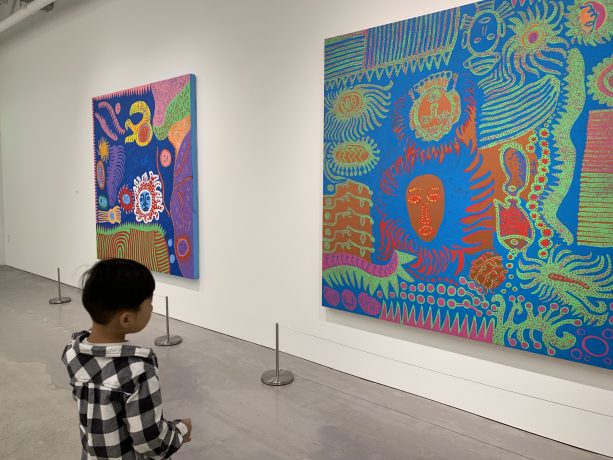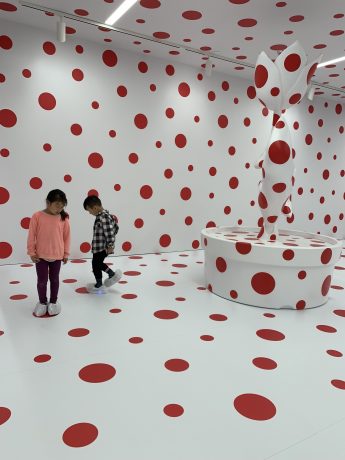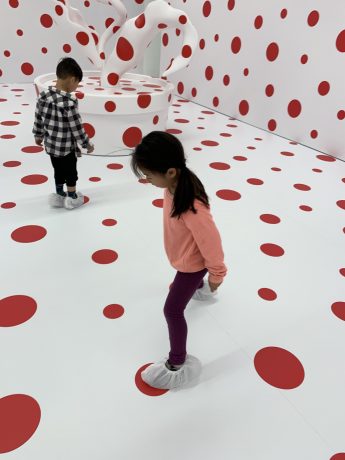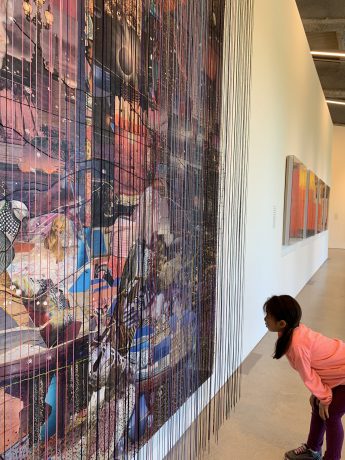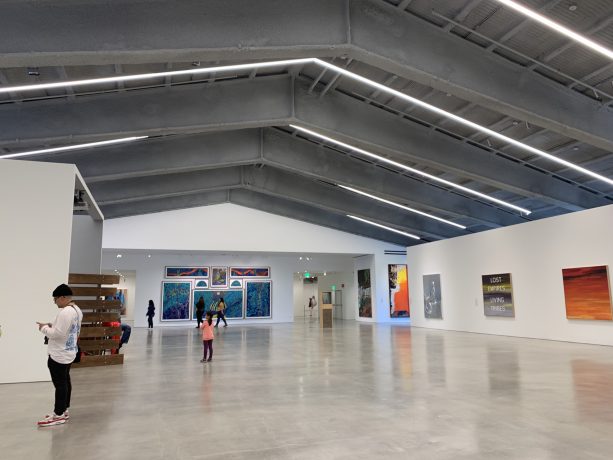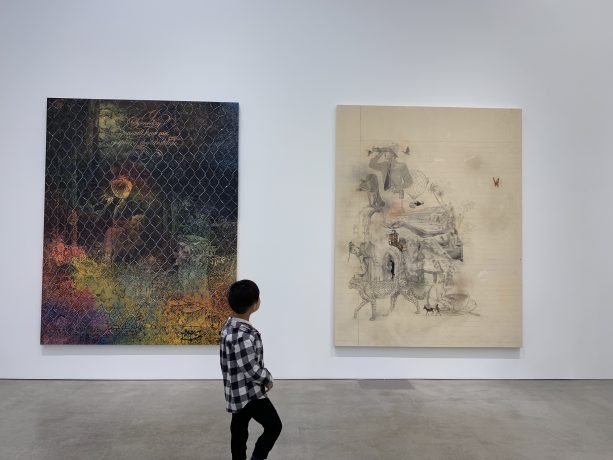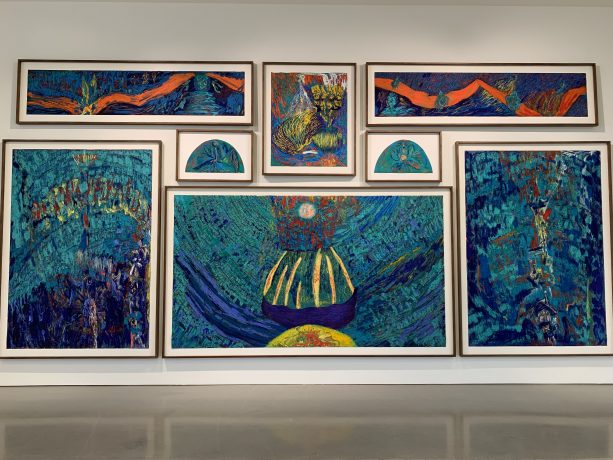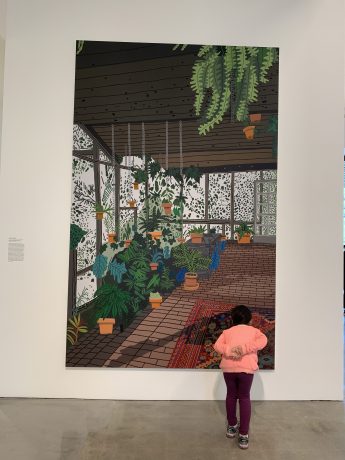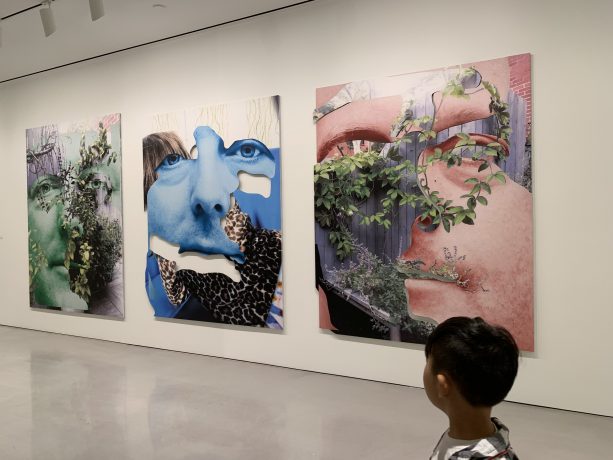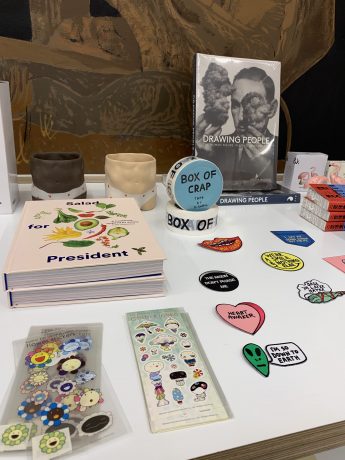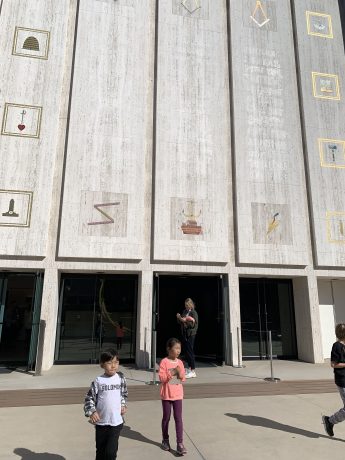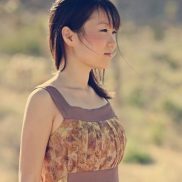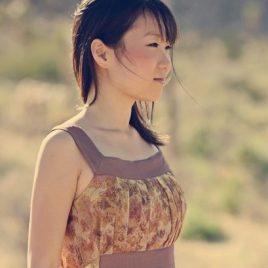The Marciano Art Foundation is located near the famed Museum Row/Miracle Mile in Los Angeles and housed in a prominent former Scottish Rite Masonic Temple. I will assume that, like myself, most Angelos have driven by this building hundreds of times over the years prior to the museum’s 2017 opening with curiosity setting in hard for that fleeting moment. Upon receiving news that the building was turned into an art exhibition space by the founders of the fashion brand Guess, the intrigue set in big time. I was excited to unveil the shroud of mystery behind the building with my own eyes while experiencing the fantastic art with our Museeum kids in tow. What an architecturally significant and fantastic art venue it was!
The Maurice and Paul Marciano of the fashion brand, Guess, residents of Los Angeles for the past 35 years share their extensive modern art collection (from the 1990s and forward) with the public while providing artists a space to be inspired and to innovate. This building was originally built by Millard Sheets in 1961 and purchased by the Marciano Foundation in 2013 and retrofitted to an exhibition space by Why Architecture and Design. The permanent collection is over 1,500 works by more than 200 artists. Some notable exhibitions include California Artists, Yayoi Kusama’s With All my Love for the Tulips, and Ugo Rondione’s works.
“One of the aims of MAF’s programs is to teach the audience how to look at contemporary art and ideas at large with open minds and to embrace the questions they give rise to with thoughtfulness and curiosity.” They also aim to be an educational programming resource for students. They work closely with the LAUSD (Los Angeles Unified School District) and other local children’s groups in coordinating visits to the museum. Their fantastic program, Future Cities project by Genesis, encourages K-12 students to use STEAM (Science, Technology, Engineering, Arts and Mathematics) principles to create interactive solutions to solve issues of living in a 21st century city. They are encouraged to design and build utilizing materials provided to build into a 3D model city block.
The weather was perfect, the traffic was terrible, and the vibrant shapes and luminous colors of the outdoor sculptures were a sight for sore eyes. The grandness of the main hall of the interiors as we made our way in was instantly refreshing. Mary Weatherford’s abstract with neon lights drew us right in, while Ai Weiwei’s intriguing works started us in conversation. A docent invited the kids to touch (!!!) and sit in Weiwei’s marble sculpture, Sofa in Black, and we were immediately willing to oblige. The coolness of the stone was jarring and strange comfortableness sinking into the sculpture was surprising.
The kids were enchanted by the mezzanine level murals so we made our way up – the work was almost interactive – although of course we were not allowed to touch the walls. The gold water fountain (assuming it was an original relic from the Temple) was surprisingly the most intriguing.
Upstairs, we stared into many of the pieces from Glenn Ligon’s typography art, as my 7 year old was interested in reading the legible portions of the literature excerpts. The mature topics didn’t make much sense to her, but for me these works were a truly successful meld of the poetic language as art with the visual art. Ugo Rondione’s hall of colored mirrors/windows was a perfect playful moment and segway into the highly anticipated and Instagram worthy Kusama exhibit. Definitely visually striking and disorienting, the tulips were the first thing that demanded a closer look. However, when in a room with red dots from wall to ceiling, what better thing is there to do but to play a little game of “don’t step outside the dots”? The kids played a quiet game stepping from dot to dot, making sure not to fall into the “lava”. It gave me some great photo ops following them around!
The main exhibition hall was a feast for the eyes. Such a wide variety of mediums and materials displayed from sculptures to multimedia works and mixed media pieces were totally engaging. As we approached each piece for closer inspection, we played a sort of guessing game to discover what materials the artists worked with. Charles Gaines’ Numbers and Trees acrylic and paint series for example, looked one way at 5 feet away, another at 10 inches away, and another at 5 inches away when you can see the raised dots of paint on the panels.
Our favorite piece was tucked away on the window side of a divided hall, Nor Song Nor Memory in the Air by Elliott Hundley. The colors, depth and shapes he achieved by using a variety of mixed media materials such as paper, wood, strings, pins, plastic, glass, gesso, and photographs was absolutely marvelous and endlessly fascinating. We spent the most time on this piece dissecting the forms and materials we found as we continued to look deeper. Liz Larner’s ceramic sculpture, i(Calefation), was otherworldly.
We received some freebie goodies just for kids, MAF notepads and pencils, as we strolled into the gift shop. Score! Next time we will stop in here first, so that we can do some sketching while walking through straight to our favorite pieces. I couldn’t help but indulge in a Kusama Pumpkin print handkerchief in mustard yellow. The Twist Cafe was our last stop, for some chips, cookies and tea, before our drive home. The selections were pretty varied, with a good selection of coffees and teas. The shroud of mystery has been lifted, and it is glorious. Marciano Foundation, you are one of our new favorite art venues in LA! We will be back in a couple of weeks for a longer sit at the café and some sketching in your galleries.
